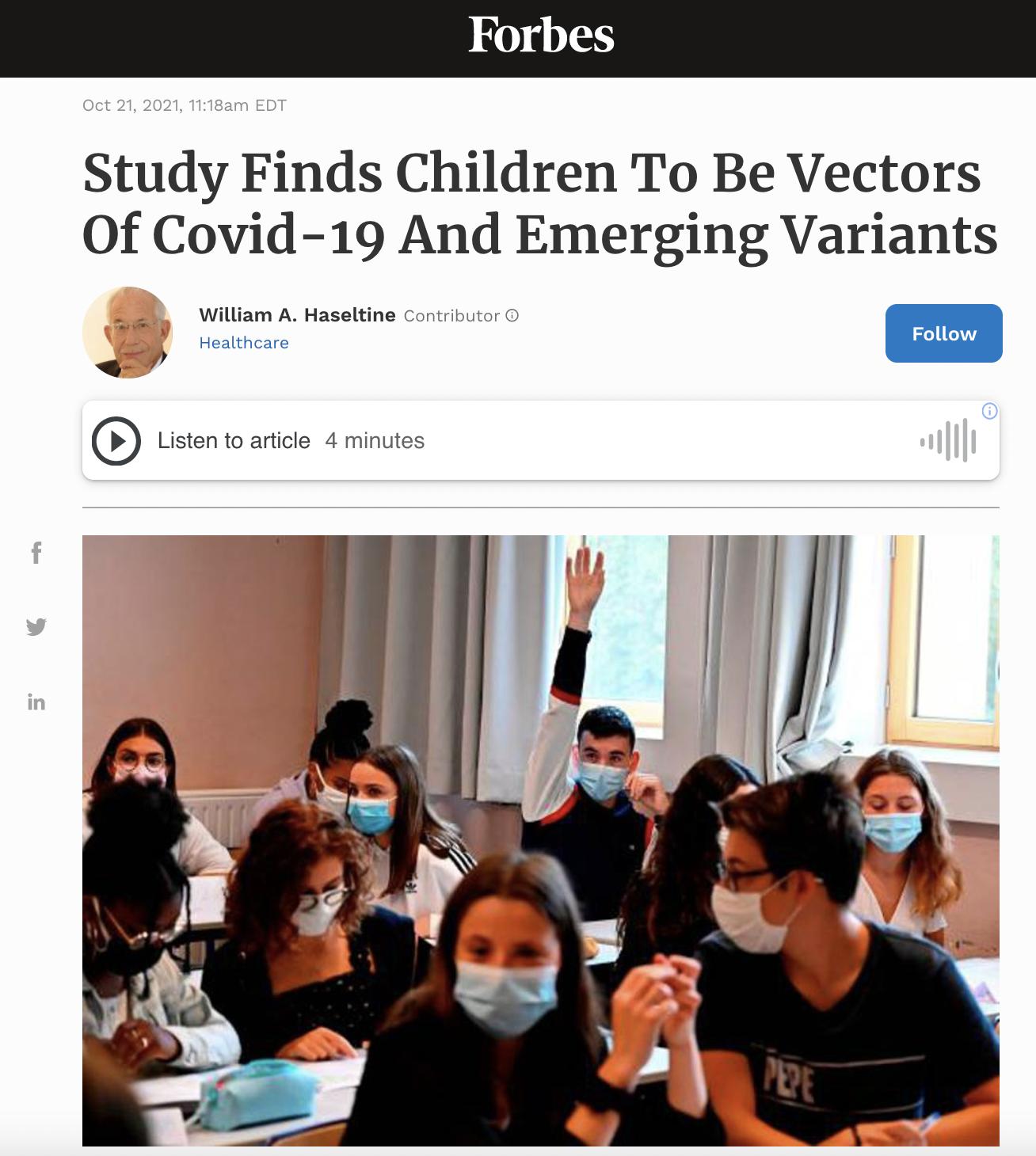A new study by researchers from Massachusetts General Hospital, Brigham and Women’s Hospital, MIT and Harvard Medical School has found that infants, children and adolescents are equally capable of carrying high levels of live, replicating SARS-CoV-2 in their respiratory secretions. This new research reinforces the urgent need to protect children as they return in person to schools and daycare centers and prevent further transmission in their communities.
The study enrolled 110 children aged two weeks to 21 years (with a median age of 10 years old) who tested positive for COVID-19 at Massachusetts General Hospital or urgent care clinics. The children presented with either symptoms concerning for or known exposure to Covid-19 between April 2020 and April 2021. One-third of the participants were identified as Caucasian (33%), 10% identified as African American, and 4% identified as Asian and one third (38%) reported their ethnicity as Hispanic.
The majority of participants with COVID-19 did not require hospitalization (72 children, 65%). But 36 children (33%) were hospitalized with Covid-19, and 18 children (16%) required supplemental oxygen and/or invasive or noninvasive respiratory support. Nasal samples were taken from adults hospitalized with acute Covid-19 from April 2020 to August 2020 whose symptoms were of equal duration to the hospitalized pediatric cohort and used in comparative studies.
Children were most infectious within the first five days of illness and age did not appear to impact viral load. Interestingly, a high viral load did not correlate with severe disease. Asymptomatic children and children with mild disease displayed significantly higher viral loads than adults hospitalized with COVID-19 with a comparable duration of symptoms.
Lael Yonker, a pediatric pulmonologist at MGH and co-first author with Julie Boucau, a senior research scientist at MGH and the Ragon Institute said that the study answered key questions about high viral loads in children. “There had been the question about whether the high viral load in children correlated with the live virus. We’ve been able to provide a definitive answer that these high viral loads are infectious,”
In addition to measuring viral load, the researchers also performed whole-viral sequencing of 57 respiratory samples from 54 children. The researchers found that the pediatric sequences were representative of the spectrum of sequences found in the community. Notable variants identified in the pediatric samples included four Alpha (B.1.1.7) and three lota (B.1.526.2) variants. This data demonstrates that infected children are potential reservoirs for the evolution of new variants as well as potential spreaders of current variants.
Data on pediatric Covid-19 has lagged behind adults throughout the pandemic causing convoluted public health guidance. During the early stages of the pandemic, many public health officials claimed that children were not at risk from infection or could transmit the virus. With children representing 25.5% of reported weekly COVID-19 cases in the US as of October 14, 2021, this has proven to be incorrect. Early assertions may have been biased by limited testing in children and the fact that children were subject to increased social isolation during stay-at-home orders, compared to adults who were exposed via frontline work and other duties.
We still do not understand the true incidence of Covid-19 infection in children due to the lack of widespread testing and prioritization of tests for adults or those with severe illness. But we now have the data to demonstrate that children can spread Covid-19 and other variants as efficiently as adults and the public health policies should follow. With children under 12 not yet vaccinated and highly vulnerable to infection, ensuring masks, physical distancing, high-quality ventilation, rapid testing, and contact tracing are used in schools is an essential part of combating Covid-19 in our communities. These policies will also assist in reducing the inevitable breakthrough cases in older children who have been vaccinated.


